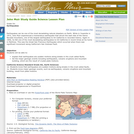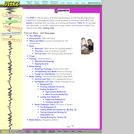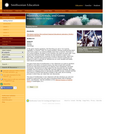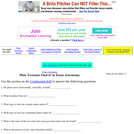
This lesson on earthquakes is based on naturalist John Muir's experiences with two significant earthquakes, the 1872 earthquake on the east side of the Sierra Nevada Mountains, and the Great San Francisco Earthquake of 1906. Students will learn to explain that earthquakes are sudden motions along breaks in the crust called faults, and list the major geologic events including earthquakes, volcanic eruptions and mountain building, which are the result of crustal plate motions. A downloadable, printable version (PDF) of the lesson plan is available.
- Subject:
- Astronomy
- Chemistry
- Geology
- Geoscience
- Physical Science
- Physics
- Space Science
- Material Type:
- Interactive
- Lesson Plan
- Provider:
- UCAR Staff
- Provider Set:
- Earthquake Education Environment (E3)
- Date Added:
- 11/02/2014


